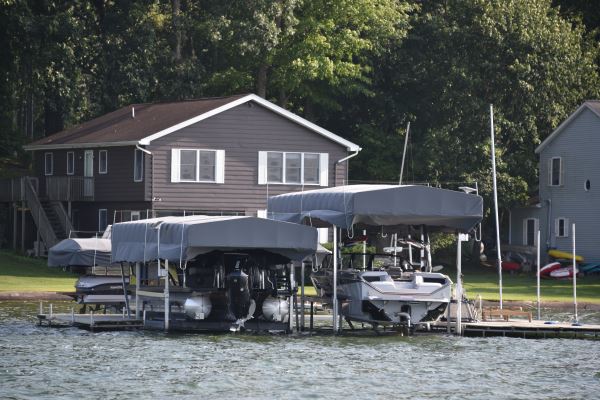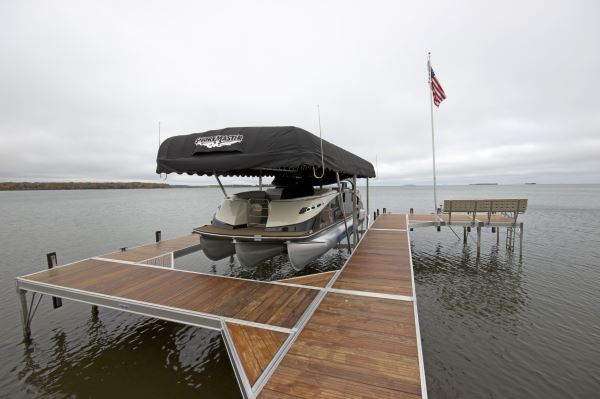 My dream house would be one of those places where I could stand on my deck and look out over my dock with a pontoon on the lift (along with my float plane) and watch the sun or moon reflect on the lake. I would also be able to go to my garage/hangar where I could decide, “Do I want to fly or drive today?” Additionally, runways need to be inspected for debris and damage so it would be pretty cool to take one of my horses for a “ride” along the runway.
My dream house would be one of those places where I could stand on my deck and look out over my dock with a pontoon on the lift (along with my float plane) and watch the sun or moon reflect on the lake. I would also be able to go to my garage/hangar where I could decide, “Do I want to fly or drive today?” Additionally, runways need to be inspected for debris and damage so it would be pretty cool to take one of my horses for a “ride” along the runway.
But I never had the lakefront or the runway. I’ve mentioned before, our lake is a Corps of Engineers reservoir that doesn’t allow landowners around the lake. My house is less than five miles from the marina and the airport. And before neighbors moved in, we did have Arabian horses. While I like horses, they are a lot of work. My “iron” horse (Harley) has always been easier to care for.
But I have a good friend who has owned a lake home for years. It gave me a chance to see what some of the lake home issues are. I was also a Certified Home Inspector for years, which adds another perspective to home maintenance issues.
So let me share a few of my thoughts. When it comes to the house, lake front or in the city, it’s not a lot different. You need to do regular inspections and maintenance. Probably the biggest things to look at includes drainage around the foundation, window and door seals, siding and roofing repair and gutters and downspouts. When you think about it, these are basic maintenance items for any homeowner.
The difference comes in with the maintenance on the docks and lifts. Many owners do the cursory inspection for the dock material, the cover (if there is one) over the boat and the lift mechanism, but many people forget about what’s below the water. With docks, it is important to look not only above the waterline, but below it. It's easy to ignore the hard-to-see issues developing under the water. Pilings, supports, sea walls etc. can all be deteriorating and cause issues. It might take hiring “the guy” with the right gear to get under the dock/lifts and see what is going on.
 Remember, safety should be the priority. Corrosion, loose boards, worn cables can be usable, but they are safety hazards. In aviation there is the “Inspect, Repair/Replace As Necessary” (IRAN for short) maintenance program. It’s really a great system to use for boats, homes, cars etc.
Remember, safety should be the priority. Corrosion, loose boards, worn cables can be usable, but they are safety hazards. In aviation there is the “Inspect, Repair/Replace As Necessary” (IRAN for short) maintenance program. It’s really a great system to use for boats, homes, cars etc.
I personally think it’s a good idea to take pictures as you inspect the dock and lift. I create folders to keep the pictures in and date them by topic and by year. These can be reviewed in the future to see if there are changes and if an item has gotten worse. This helps with the “IRAN” maintenance program.
Following are a few more tips. Make sure you check everything including fasteners, hardware and bolts. Also check any stairs or ladders for damage and look for loose boards and rotting cross beams.
Since it is a dock, make sure nails, screws or other fasteners are flush with surfaces. Items that are not flush (and uneven planking) can play havoc on bare feet or trip up flip flop running children.
If you have electrical service on the dock or the lift, make sure all electrical supplies and wiring are up to date and in safe working order. Electrocution near docks is an issue every year.
Make sure when you are inspecting (and taking pictures) to look for etching, discoloration, weakness, corrosion and rust on metal and wood components. While they might appear to be in good condition, the fact that they are discolored or have etching or rust, indicates that they need to be repaired or at least followed up with soon.
If you’ve lived in a waterfront property for a while, you probably know all of this already. But these tips should give any new dock owner a good start or an experienced owner a few reminders.

